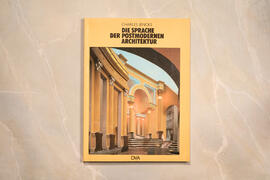The Cosmic House is one of the key landmarks in the development of Post-Modernist architecture. A hugely influential distillation of the ideas at the heart of Post-Modern thought in culture and science, it is a remarkable testament to the polymathic talents of Maggie and Charles Jencks.
Built between 1978 and 1983 the house subverts the genteel architecture of Holland Park, exaggerating, caricaturing and embellishing the white stucco until it becomes a microcosm of contemporary architectural theory, semiotics and historiography. An almost human character is imposed on the architecture with each element related to the human body and then to the larger cosmos. It is an architectural essay about our relationship to proportion, building, culture and the universe.
Densely packed with ideas, symbols and motifs, its architecture embraces an entire cosmos of architectural allusion, history, metaphor and reference. Switching between pop and classical culture, between high art and accessible kitsch, it became a built manifesto for the architecture that emerged in reaction to the slowly solidifying canon of Modernism as it faded in the late mid-century. Designed in collaboration with architect (Sir) Terry Farrell, and built between 1978 and 1983, the house became a forum for conversation and dialogue at the epicentre of the Post-Modern moment and the cultural discourse around ideas, history, science and aesthetics.
The spaces are characteristically Post-Modern with multiple changes in levels, shifted axes, fragmented forms, architectural quotations, views obliquely across spaces and glimpses of neighbouring spaces enticing the visitor around the interior. Unusually for an interior of this period it remains substantially as it was designed, built and lived in with all its original bespoke furniture and fittings intact.
Jencks, Charles Alexander